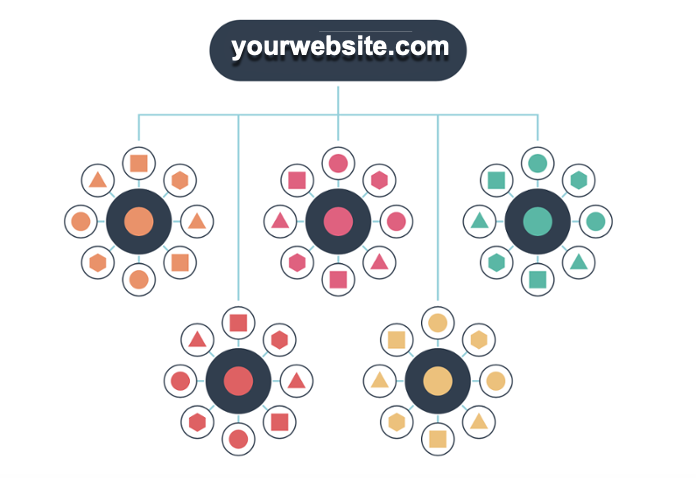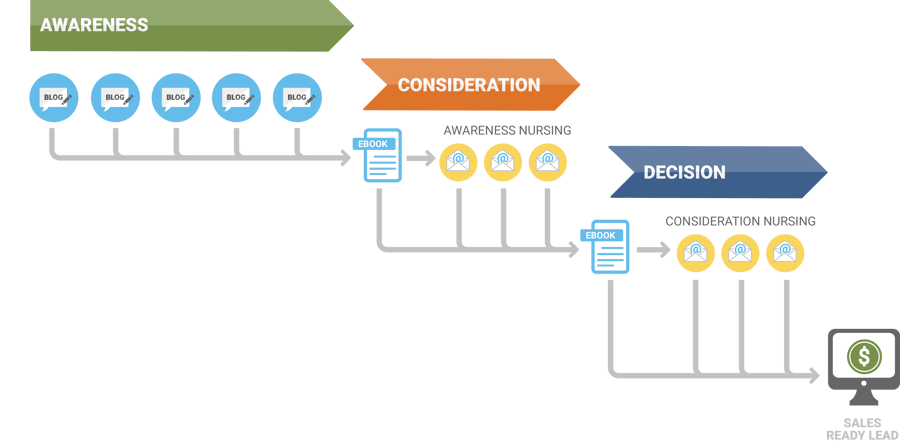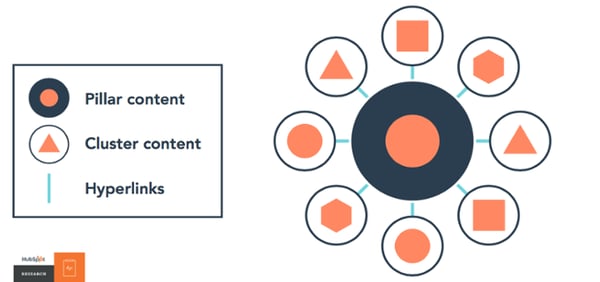
In our previous blog post we discussed the importance of creating a content strategy to effectively attract visitors to your website and help fill your sales funnel with leads. That content strategy is the engine that drives your inbound marketing program. Content is the fuel that powers it.
Nurturing each lead through their sales cycle journey requires content for each specific stage of the journey, as leads begin to looking for progressively more detailed information about your organization and its products or services. Emails, blog posts, social media messages, and other content tools enable businesses to continually “touch” their prospects and guide them to the next stage of their journey in their search for information and solutions to their problem.
The cornerstone of your inbound campaign is premium content – something of value to the prospect worth giving up contact information for in order to receive the premium asset. This can be an eBook, white paper, executive guide, research report or some other content that provides valuable, objective, and relevant information that can help solve a problem for the prospect.
As with all components of an inbound content marketing campaign, there is a proven process for developing content. Using the topics established when you created your content marketing strategy, subject matter experts provide the information necessary to write the content, which is then reviewed and edited to ensure that it hits the target and aligns with the intended buyer’s journey stage.
Once the text is finalized, it’s put into an attractive format that matches your brand look and is prepared for delivery. That requires creating landing and delivery pages for the premium content that are optimized for delivery while continuing to nurture prospects in their journey to becoming customers.
This graphic shows how the premium content, in this case eBooks are situated between the blog articles and nurturing emails.

Now that your content is ready to make its way out into the world, it needs to become visible to your target audience. That requires targeted promotion through a variety of channels, including email, social media, third-party links, and especially blogging.
Blogging is an ideal way to increase organic traffic (organic means a user types a search term into a web browser and your content appears through a link in the search results) with prospects who are searching for the problems your business addresses and the solutions you provide. These visitors are your highest value leads because they are seeking what you’re offering right now.
However, blogging isn’t easy because it takes a long-term commitment for it to produce results. Posts developed around the topics outlined in your content strategy must be written, keyworded, and posted on a regular basis to increase visibility and traffic. Each post must provide educational and compelling information that engages the reader and encourages them to act in a specific way to deepen their relationship with your business and journey further down the sales funnel. What's more, as described in the content strategy article, the content should be created in clusters (see below) with the premium asset (eBook) as the pillar content and the blogs as the cluster content, to create a foundation of information for the visitor to fully explore answers to their problems.

What can make blogging so powerful is its ability to create opportunities for thought leadership – it can establish your organization as an expert and leader in your field. Creating this perception over time will garner referrals from others interested in the topics covered, resulting in valuable inbound links from third party blogers, forums, and other online platforms. Earned links through blogging are highly valuable for achieving higher search rankings because they are viewed more favorably by search engines.
A word of caution: there is nothing worse than having a blog that posts only three or four times a year. Visitors to your blog and website will assume a lack of commitment or follow-through, so instead of building thought leadership, a lack of consistency and quality erodes it. If you are concerned about your firm’s ability implement a consistent blogging program in-house, consider working with an outside partner (insert shameless self-promotion message here) such as Bristol Strategy. Click this link to get help with your content & blogging program.
Bristol Strategy is a “full funnel” inbound marketing agency and inbound sales agency offering comprehensive Inbound Marketing services that enable our clients to surpass their business objectives by transforming the way they engage with their buyers on-line. Reach out to us to learn more about how our proven processes can help your business grow.
Ask us about our unique approach that creates a full-funnel "inbound" engagement model for your business that attracts and converts digitally engaged prospects.